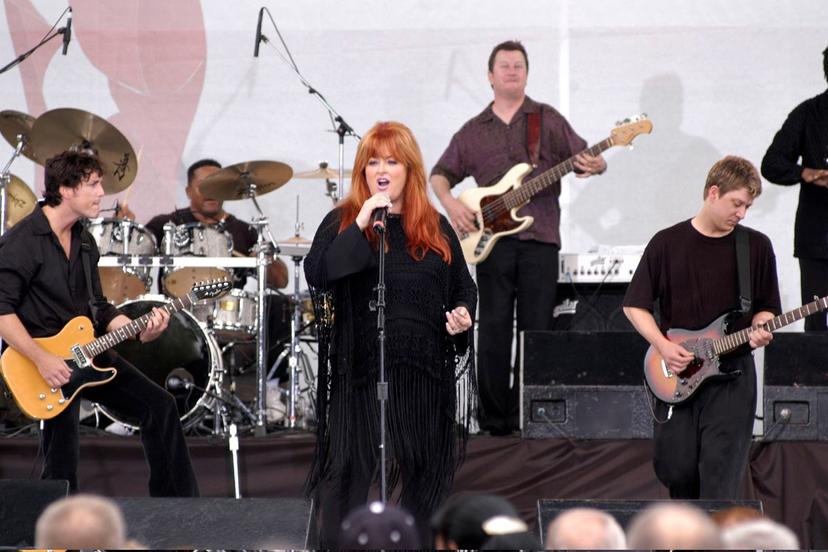Music

Industry Outlook
According to the Occupational Outlook Handbook, employment of musicians will show little or no growth through 2028. Most new jobs for musicians will be due to increased demand for live performances and opportunities for session players. Slow employment growth is also predicted for self-employed musicians, mainly due to the large number of people competing for recognition in this field.
Competition is extremely intense in virtually all fields of music. Although extremely talented musicians have a better chance than others do of becoming successful, even those musicians have no guarantee of success. People skills, business knowledge, and a knack for self-promotion have become more and more important.
Commercial music has experienced lower sales in recent years, as buyers have found new places to spend their money. The boom that the recording industry experienced after the introduction of compact discs in the 1980s died out as digital music emerged to replace CDs. Music sales have rebounded somewhat due to purchasing and downloading music via the Internet, such as through Apple Music, Spotify, Pandora, Amazon Music, YouTube Music, among others. Digital platforms reached a milestone in 2016 when the combination of subscription services and download purchases finally helped digital music outsell physical media. However, U.S. digital downloads of music have since experienced a decline in revenue, from $765 million in mid-year 2017 to $462 million in mid-year 2019, according to a report by the Recording Industry Association of America (RIAA).
On a more positive note, the RIAA mid-year 2019 report showed that U.S. music industry revenue has recently experienced revenue growth after several prior years of slow growth. The U.S. recorded music market had $5.4 billion in revenue by mid-year 2019, an increase over $4.6 billion in revenue by mid-year 2018 and $4.2 billion in revenue by mid-year 2017. Streaming music revenue continues to grow, reaching $4.3 billion by mid-year 2019, a nearly $1 billion increase over 2018 mid-year revenue, and a significant increase over the $1.7 billion in revenue in 2016. Another surprise was that net revenues from physical products, such as vinyl albums, grew by 5 percent from mid-year 2018 to mid-year 2019, reaching $485 million in revenue.
Not reflected in these figures are revenues from other sources, such as live performances or music publishing rights. Revenue from concerts grew 33 percent from 2011 to 2015, demonstrating music lovers' strong willingness to pay a premium to attend live performances. The highest grossing tours of 2019 earned hundreds of millions in revenue: Ed Sheeran (nearly $224 million), Pink (more than $215 million), Elton John ($212 million), Metallica ($179 million), Rolling Stones (nearly $178 million), Bon Jovi ($134 million), and Ariana Grande ($118 million). Music publishing, which encompasses mechanical royalties (for recording a piece of music), performance royalties (for playing live), synchronization royalties (for use in films, television, commercials), and other licensing, generated $7 billion in revenue in the U.S. in 2019, according to a report by the market research group IBISWorld. The companies that hold the largest market share in the U.S. music publishing industry include Universal Music Publishing Group and Sony/ATV Music Publishing.
The coronavirus pandemic, which started in late 2019, affected all areas of the music industry. In the concert and event promotion sector, an estimated 69 percent decline in revenue was expected in 2020 alone due to event cancellations. The Coronavirus Aid, Relief, and Economic Security (CARES) Act was established in 2020 to offer economic relief to nonprofit arts organizations, including music organizations. Other national relief efforts for musicians, arts, and other creative professionals included the MusiCares COVID-19 Relief and the Artist Relief fund. The lockdowns and social distancing requirements in 2020 caused a surge in digital streaming of music. According to IBISWorld, this growth is expected to continue through 2026. The acquisition of major artists' catalogs at the top of the industry is also expected to create new avenues for monetization and revenue growth in the music publishing industry in the coming years. The rollout of the COVID-19 vaccine in 2021 will boost the economy and as the pandemic becomes contained, revenue in the music industry will increase due to the resumption of live concerts and music events. IBISWorld cautions, however, that the recovery in this sector will be "slightly subdued" because the loosening of restrictions complicates planning for live events.
Music education as well as production and repair of musical instruments offer other opportunities within the industry. The latter is a relatively small field with slightly fewer than 9,000 workers in the U.S., and it is projected to decline by 9 percent through 2028. The former provides many more opportunities at grade schools, high schools, colleges, and for private lessons, but employment as a music educator can be affected by school budgets and varying levels of interest within a district or community.
Outside the commercial mainstream, many artists have found that they can make a decent living by catering to small, devoted audiences. In addition, advances in technology have made it possible for musicians to buy or rent at a relatively low price the equipment they need to produce their own recordings. Many artists now sell their own recordings by direct mail and through the Internet, avoiding the large record companies and producers that pop musicians must court. Self-production ensures that artists can make their own creative decisions and pocket a higher percentage of their earnings than they would receive if they worked with record companies.
